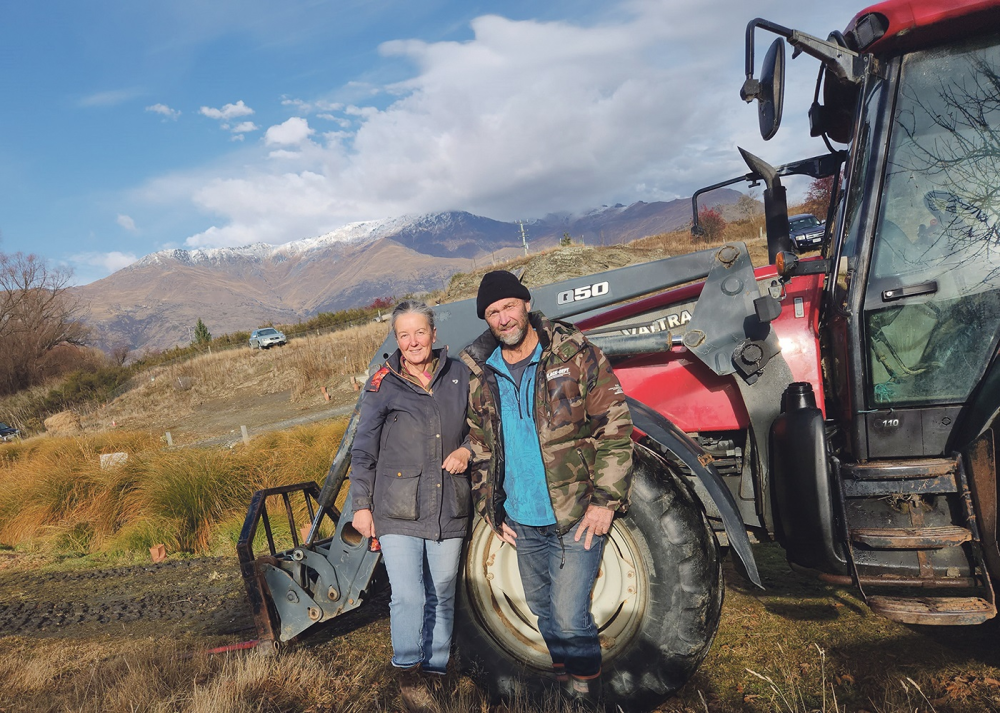
Former dairy farmers Eileen and Shane Walker are in the fifth year of a Te Horo wetland project they hope will be a recreational space for the whole community to enjoy.
The project is called Parahamuti, so named after advice from Ngā Hapū o Ōtaki that the stream bordering the wetland site originally had that name. The project is based around the Te Horo farm Eileen and Shane lease to local dairy farmers Andrew and Stacey Faith. The goal is to improve water quality and increase biodiversity.
During stage 1 in 2023, a 1.5ha area was planted, with stage 2 now under way which involves building fish ladders and restoring a 5ha-plus area containing native species.
DairyNZ is lending its scientific expertise to the project, which is also supported by Fonterra, the Greater Wellington and Kāpiti Coast councils, and Ngā Hapū o Ōtaki. DairyNZ will help with water quality monitoring during wetland construction in stage 3.

Eileen and Shane Walker, who are driving the Parahamuti wetland project. Photo supplied
“We work alongside farmers to improve waterway health, and this project has similar goals,” DairyNZ senior science manager Aslan Wright-Stow says. “We encourage farmers to invest in restoring and protecting wetlands and, where appropriate, constructing new ones because of their environmental benefits.
“Wetlands can boost biodiversity, provide habitat for birds and fish and reduce contaminants such as nitrogen, phosphorus and sediment – and they look great. We look forward to continuing to work with Eileen and Shane, councils and iwi to help accelerate positive change.”
Eileen and Shane’s interest in wetlands was sparked after attending a 2014 Rabobank seminar, where the presenter spoke about how effective wetlands could be in removing sediment and improving water quality. That led to a collaboration with Christine Finnigan of the Nguturoa Catchment Group to create a wetland near Gore on land the three co-owned.Eileen says they wanted to improve water quality and create a nice space for recreational activities such as kayaking, picnics etc.
After the Gore project, Eileen and Shane realised a wetland could also suit the low-lying fields of Te Horo, which flood regularly.
“A big part of this Te Horo work for us is showing you can do good things alongside operating a dairy farm,” Eileen says.
The couple now live in Arrowtown and say managing the project remotely is no easy feat. However the Faiths support the project by allowing access, and Eileen and Shane work closely with Greater Wellington’s Jamie Peryer, who they say has been great at organising things.
“Ngā Hapū o Ōtaki has also been excited about the project and very encouraging.”
Shane grew up in Te Horo and his siblings still live in the community. His brother, Kerry, who lives opposite the original home farm, has worked with GW on his own planting projects. The opportunity to help improve the environment he grew up in is another motivation of the work for Shane.
“The home farm next to where we’re doing the wetland has been in our family for 100 years,” he says. “It’s been a great little dairy farm and it seems like the time is right to restore the land, to return it to how it was before it was drained.”
The planned planting aims to reflect the native species that would have been on the land originally.
“Largely kahikatea,” Eileen says. “There would have been big forests there. Kerry has noticed with his planting there is a lot more natural spread of other native species. The more natives that go in, the more birds are attracted, and they spread seedlings. Once you’re on the right side of it, it becomes a very positive cycle.
“We hope the wetland will become home to endangered birds such as the spotless crake [pūweto] and the bittern [matuku-hūrepo].”
In keeping with their long-term vision, Eileen says she and Shane hope the wetland area will eventually include cycle, walking and bridle trails.
– Source: DairyNZ
OTHER STORIES


